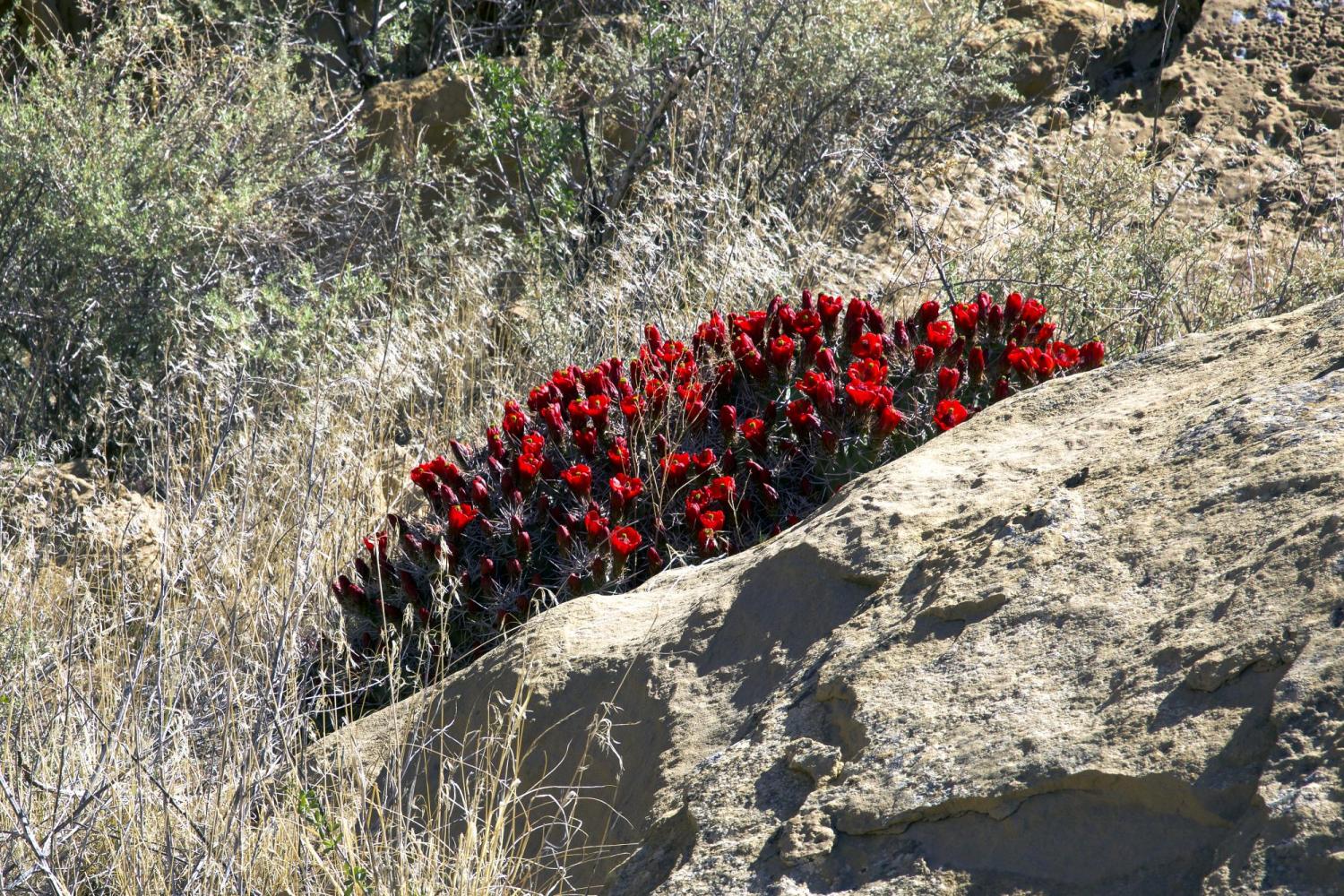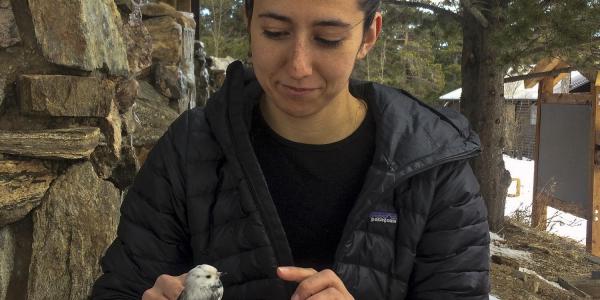I was welcomed to my tent site in Chaco Culture National Historic Park by a handsome claret cup cactus. I had been traveling and hiking in New Mexico for two days, and although I had been looking for blooming cacti, this was the first that I had found.
A profound drought has delayed spring in the southwest, and claret cup is one of the first cacti to flower in spring.
This particular specimen was gorgeous, between three and four feet in diameter and bearing approximately 150 blooms. Smaller and presumably younger claret cups were nearby, with just one or a few stems and several flowers. As the cacti grow, they form distinctive, impressive mounds, some with several hundred blooms.
The claret cup cactus, Echinocereus triglochidiatus, is aptly named. Echinocereus is derived from the Greek “echinos,” meaning hedgehog, for the smaller cacti have a growth form suggestive of those spiny creatures. Claret cup describes the distinctive shape of the flower and the color of the tepals (the structures forming the outer portion of a flower when they are not differentiated into sepals and petals).

The claret cup cactus grows as a mound of up to three to four feet in diameter, with about 150 blooms, each lasting three to five days. Photos by Jeff Mitton.
In addition to color, its flowers are distinctive for shape, morphology and timing of availability. The flower is in the shape of a funnel, slightly over two inches wide and about three and a half inches long. The stigma is tight cluster of seven to nine bright green lobes atop a sturdy white style.
The anthers form a dense pink to purple collar around the style, well below the stigma. The stamens cluster tightly to the style, and they form a conical roof over the nectar chamber, at the very base of the cup. Finally, while most cactus flowers close at night, claret cupflowers are open all day and all night to accommodate their pollinators.
Bees, butterflies and flies are common cactus pollinators, but hummingbirds are the most common pollinators for claret cups. To take a sip from the nectar chamber deep in a claret cup, the hummingbird must stick its whole head into the flower. Its bill, face and the top of its head rub against both the stigma and the collar of anthers as it penetrates the flower, assuring the transfer of pollen.
Flower size and shape and placement of anthers and nectar chamber are adaptations for hummingbird pollination. And I suspect that while the stamen filaments forming the conical roof of the nectar chamber are easily parted by a long bill, the filaments may serve as a barrier to nectar-robbing flies and beetles.
Cactus beetles inhabit virtually every prickly pear cactus and every claret cup flower that I examined in Rabbit Valley, in the McInnis Canyons National Conservation Area in western Colorado (described in a column in April 2017). Cactus beetles play little or no role in pollination, but they spend their days in cactus flowers cutting stamens and eating pollen.
Adult beetles fly to and enter cactus flowers immediately after they open and promptly lay eggs at the bases of stamens. The eggs hatch in three to five days, the larvae eat pollen and flower parts for several days and then leave to pupate in the soil. I cannot see any way in which cacti benefit from hosting cactus beetles.
Claret cup is native to Texas, Colorado, New Mexico, Arizona, Nevada, California and northern Mexico, and like many widely distributed species, it exhibits considerable variation across its range. Anther color varies from pink to purple, and tepal colors include light pink, orange, brilliant red, dark rose and lavender. The density of spines varies from densely bristling to spineless.
Quite recently, geneticists discovered that claret cups in the northern portion of their range are diploid (22 chromosomes) while those in the southern portion of the range are tetraploid (44 chromosomes). This variation seemed to some to be sufficient justification to name the tetraploid a new species, E. coccineus.
However, others objected, noting that the only way to confidently identify E. triglochidiatus from E. coccineus is to count its chromosomes, and therefore the species cannot be distinguished in the field. Naming of species is tricky when populations are just beginning to differentiate along independent evolutionary trajectories.



